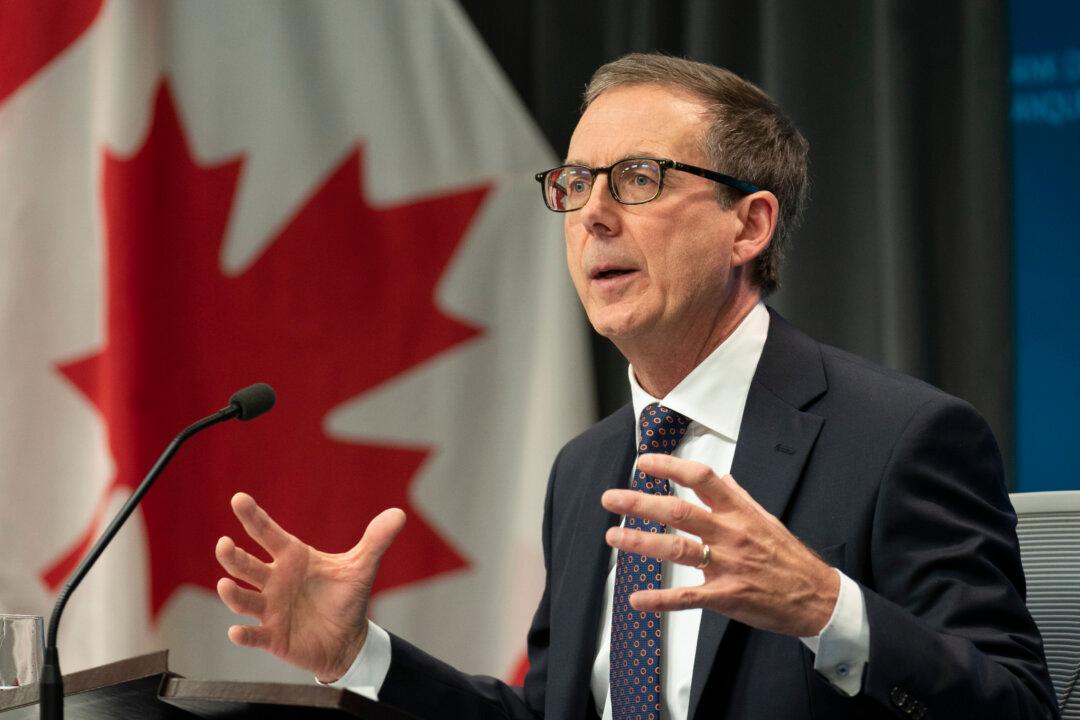Central banks are under pressure to fight mounting inflation that’s looking less transitory than what they initially suggested. Their ability to contain inflation is being questioned as is how quickly they will eventually need to raise rates.
After the global financial crisis, central banks dealt with years of persistently underwhelming consumer price inflation, with their attempts to remedy the situation frequently ineffective. These included keeping interest rates near historic lows for over a decade and buying bonds to reduce longer-term rates in efforts to stimulate economic growth and raise inflation to more normal levels.
Now the task central banks face is quite the opposite—dialling back measures meant to support the economy since inflation is running well above acceptable levels, with supply chain disruptions often identified as a contributing factor. Canada’s annual inflation rate for September hit an 18-year high of 4.4 percent.
“The fear is that policy-makers might have a dovish bias, given these experiences, and risk being slow to recognize if inflation has become a more permanent feature of the landscape,” Deutsche Bank said in an Oct. 21 research note that compared the 2020s with the 1970s.
Deutsche Bank argues that policy-makers were “consistently behind the curve in reacting” to rising inflation in the 1970s, as inflation was already embedded in the system before the oil price shocks hit. A succession of supposedly transitory shocks added up to make inflation skyrocket.
“Institutional memories of high inflation have faded over time,” said Deutsche Bank.
However, according to University of Waterloo economics professor Jean-Paul Lam, inflation is in fact transitory, and the former Bank of Canada employee doesn’t feel that the BoC, for example, is “behind the curve.” Instead, Lam believes that it faces a credibility issue.
“If they [BoC] are seen to be not moving interest rates sooner than later, they might lose some of their credibility with the market,” Lam told The Epoch Times.
Raising rates would encourage savings and curb borrowing and spending growth and consumer demand, thus slowing inflation. But Lam said a decision to raise rates would have more to do with protecting the central bank’s credibility than dampening the threat of runaway inflation.
The Bank of Canada held its key rate at 0.25 percent at its Oct. 27 interest rate announcement.
Meanwhile, financial markets have been aggressively pricing in future rate hikes, as the past two months have seen annual inflation exceed 4 percent.
BMO reported on Oct. 22 that two months ago the market had almost no expectations of a BoC rate hike by the end of 2022, but now it is expecting four hikes by that time.
“We don’t dispute that the BoC is falling behind the curve here,” TD said on Oct. 22. Based on one of its models for forecasting interest rates, TD suggests that at least one 0.25 percent rate hike could have come in the third quarter of 2021, with a full 1 percent by year-end.
“The bank now expects CPI [consumer price index] inflation to be elevated into next year, and ease back to around the 2 percent target by late 2022,” according to the central bank’s Oct. 27 interest rate announcement.
In the ongoing recovery from the COVID pandemic, central banks were initially quick to declare rising inflation as transitory due to base-year effects, where year-over-year inflation appears elevated because it’s being compared with unusually low price levels a year earlier, during the first major lockdown.
It would be hard for inflation to remain high a year from now when compared with today’s elevated price levels—it would have to keep climbing at a furious pace to still be pushing through 4 percent a year from now.
“What causes ongoing inflation is ongoing excess demand in your economy. Right now, … we continue to believe there is excess supply in the economy,” Bank of Canada governor Tiff Macklem said during the bank’s Oct. 27 press conference.
Money Supply
Deutsche Bank noted that U.S. money supply started growing rapidly in the late 1960s, but during the COVID-19 pandemic “there’s been a faster injection of money into the economy in the space of a year than we saw at any point in the 1970s.”
Rapid growth in the money supply can contribute to higher inflation.
In Canada, money supply was growing at a rate of over 25 percent annually when the pandemic began, based on a couple of its measures. Even though its growth rate is now falling, it’s still continuing to expand faster than in any period in the last 25 years. National debt and deficit levels are also much higher today than in the 1970s.
In April 2020, the Bank of Canada began buying a minimum of $5 billion a week in bonds, which increased the money supply significantly. On Oct. 27, the BoC announced that it will keep its bond holdings constant going forward by just reinvesting any proceeds from bond maturities.





